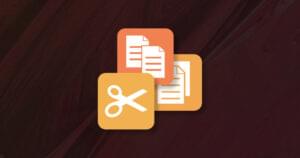Perhaps this is a familiar story. You’ve built a new website or app, dogfooded it with your team, and now you’re ready to test with real-life users. Excitedly, you gather a few people who are most likely to be your target audience, and begin the testing sessions.
Immediately you start getting some rather… painful feedback.
- “I have no idea what this is”
- “I would never use, or come back to this website”
- “How do I log-in?” *Ignores giant log-in button*
User testing is often the moment where the rubber meets the road. All your ideas, decisions, sketches, and code comes together to create a real interface… one that a user is now attempting to use, and is forming their own ideas about.
It can be hard to watch.

Forgive me if my emotions are a bit raw from some recent feedback sessions, but I’d like to share a bit about the experience, and a few of the lessons I’ve learned along the way. Hopefully these tips can help you build better products… and not burst out crying in the middle of a user critique.
The humbling experience of testing Versioning
After a few weeks of working on Versioning, our new curation platform, with our developers, I headed to a local co-working space to watch web developers use the prototype. At this point we had a working web app. We’d been dogfooding it for a week, the SitePoint team was using it daily, and we really enjoyed it! While Versioning was rough around the edges, I thought we had a reasonably intuitive web app.
After three sessions, I was a lot less excited. People had NO CLUE what it was, or what it did. It was a hard truth – we had built something that wasn’t intuitive at all.
Testing can be a hard process. Here are a few bits of advice.
Listen deeply
If you’re passionate about your work (and hopefully you are!) it’s worth centering yourself before a day of feedback. You’ll need to be prepared for whatever comes your way. When getting feedback, be agreeable to the things you’re hearing. Listen deeply, nod along, and don’t try to defend what you’ve made. You’re not pitching to users, you’re trying to make it better for them.
This feedback doesn’t define you, how good you are at your job, or if your mom loves you. But it will help you make improvements!
If you sense that you’re too close to the product, it might be helpful to have a third party run the user testing—maybe a colleague who hasn’t been as involved.
Try to find the deeper problem
No doubt, during user testing, people will give advice and recommendations about changes to the design or features. That’s great! But don’t just take them at face value. Keep asking “Why?”.
During one testing session a user suggested a color change. That would have been easy to ignore, or change the CSS to their liking. But when prompted “Why?” they told us how the website didn’t feel fun, and that it really lacked personality. THAT was much better feedback, and helped us re-think a few things on the site.
Channel your inner Socrates
“What does this button do?”
Participants might ask questions of you during the process. Because you don’t want to influence their understanding, it’s a good technique to answer questions with one of your own.
“Yeah, great question. What would you expect that button to do?”
Being patient and encouraging helps to make participants more comfortable to continue in the process, even when they’re not totally sure what the outcome is supposed to be.
The payoff
It’s tempting to delay testing until you feel comfortable with what you’re building, but testing should start as soon as you have a prototype. It will help validate things you’re doing right and hopefully raise flags on features that aren’t intuitive (or necessary).
The gap between how we might imagine people will engage with our creation, versus how they actually do, becomes pretty obvious (Spoiler Alert: no one reads explanatory text, small buttons get ignored, and attention spans can be less than the time it takes a page to load). User testing can be a harsh reality, but it’s much better than the false reality where users want, think, and do exactly as you’d expect.
“Success is the ability to go from failure to failure without losing your enthusiasm”
Although running user testing sessions is humbling, it really does pay off in the end. After a few sessions, and LOTS of changes to the interface, we saw more smiles and fewer frustrated users. Participants immediately picked up on what Versioning is, how to submit links, and quickly understood how to use the site.
What’s your experience with user testing? And how did we do? Is sitepoint.com/versioning intuitive to use? I’d love to hear what you think in the comments!
 Kyle Vermeulen
Kyle Vermeulen
